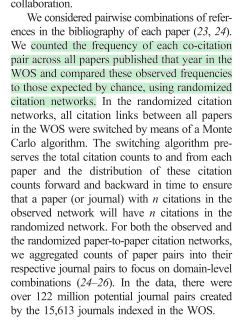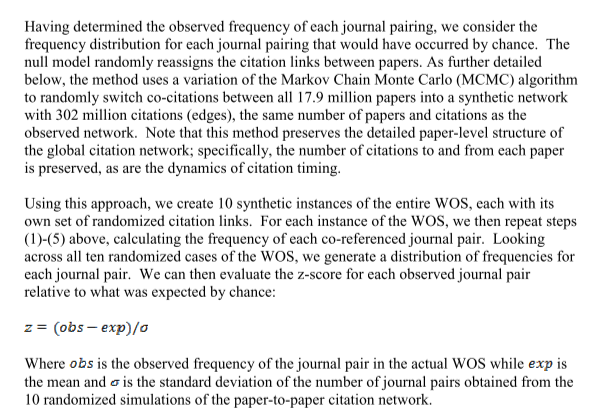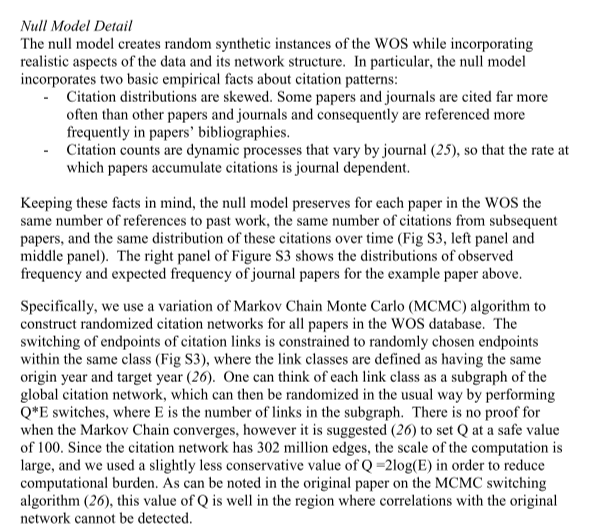joelchan's working notes
Powered by 🌱Roam GardenJuly 22nd, 2021
This is an "Orphan" page. Its core content has not been shared: what you see below is a loose collection of pages and page snippets that mention this page, as well as snippets of this page that were quoted elsewhere.
@uzziAtypicalCombinationsScientific2013 for [[QUE - How might domain distance modulate the effects of analogies on creative output?]] | both combining highly atypical and conventional combinations of journals (as a proxy for domain knowledge) led to 2x more likelihood of being a "hit" compared to average; teams more likely to enter this state too
methods notes
17.9 million papers in Web of Science from 1990 to 2000
 (p. 468)
(p. 468)
both novelty and conventionality defined in terms of expected frequency of pairwise combinations of journals cited in a paper. background distribution estimated by Monte Carlo algorithm switching citation links in a citation network of all papers published *the same year* as the focal paper to generate 10 "alternate universe" webs of science citation networks

 (SI p. 3)
(SI p. 3)
null model preserves assumptions about skewed citation distributions as well as varying citation accumulation by journal, and holds constant the observed number of citations for each paper
 (SI p. 5)
(SI p. 5)
example:

novelty and conventionality for each journal pair was then defined in terms of z-score of the observed frequency for that combination relative to a random distribution from the simulated citation network: higher z-score above 0 considered conventional (more common than expected by chance) and lower z-score below 0 considered more atypical/novel (less common than expected by chance)

then novelty and conventionality for each *paper* defined in terms of the median and 90th-percentile z-score of the distribution of journal-pair z-scores for that paper. for binary analysis, high and low for conventionality = above or below median, and high and low for novelty = below or above 0


"hit papers" = >= 95th percentile of citation count for following 8 years from publication
results notes
[[EVD - journal pairs from the same Web of Science discipline had significantly higher z-scores than journal pairs across disciplines - @uzziAtypicalCombinationsScientific2013]]
[[EVD - papers with high median conventionality and high tail atypical combinations of journals they cited were 2x more likely than average to be in top 5 percent of citation distribution - @uzziAtypicalCombinationsScientific2013]]
this makes me think that it's related to far analogies because there is a lot of clear groundedness in an existing literature
[[EVD - teams were more likely than single or pair-authored papers to cite atypical combinations of journals - @uzziAtypicalCombinationsScientific2013]]
relevant for later work on science of team science
discussion
i really really really wish we had some case studies of these combo high novelty high conventionality papers, in terms of what specific atypical combinations of journals (by proxy, domains of knowledge) were doing.